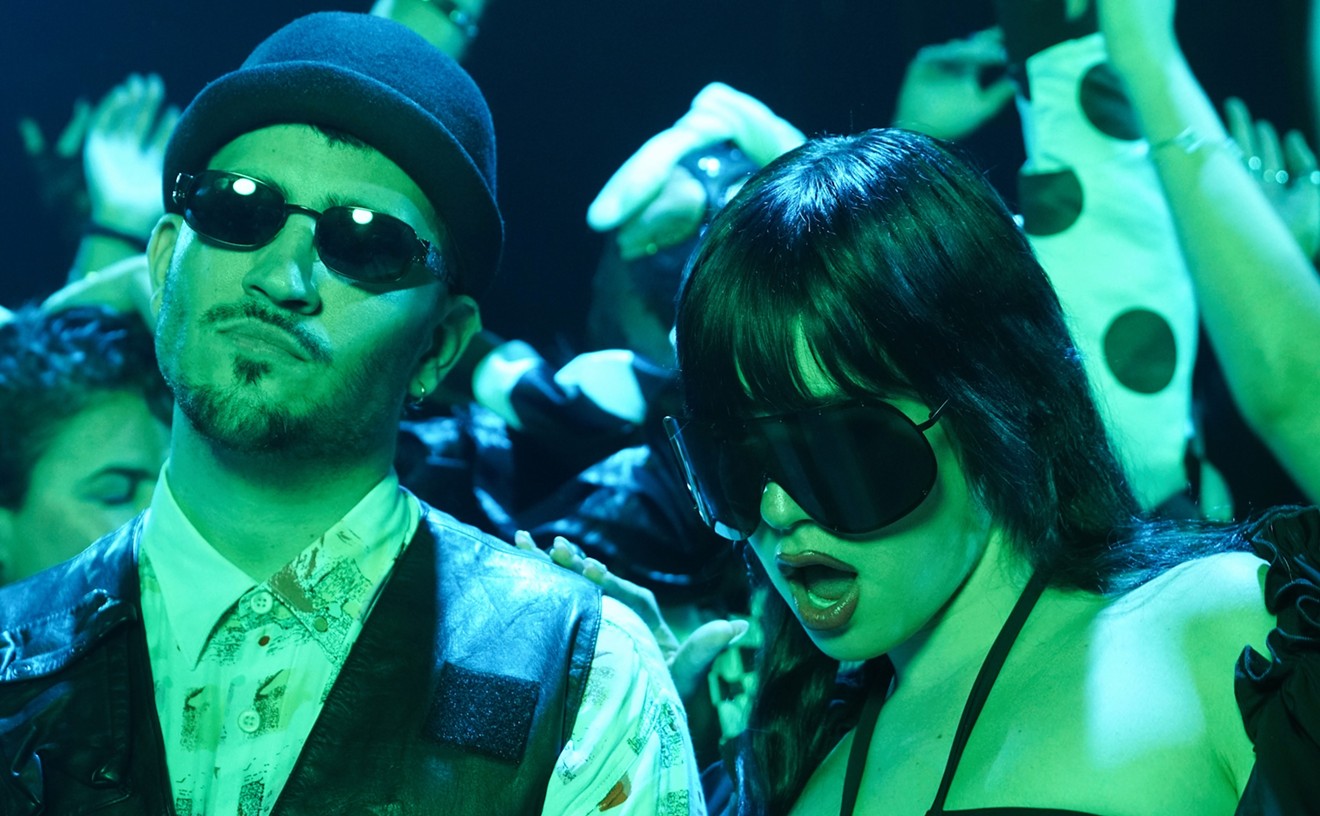It was pitch-black. It was long and slick. It was hard and secure. It bounced in every direction yet never appeared out of place.
It kindled enough swagger and confidence to ignite a copycat trend throughout the world's salsa hubs, which is still evident to this day, among a horde of certain thirtysomething Hispanic men.
It reeked of being so Eighties but nonetheless continued to swing along and march to a beat of its own. It accompanied salsero Luis Enrique night after night and was right there when he arose every morning. It was considered sexy. It was defining and unmistakable. It was an indelible part of Enrique's persona.
Oh, that lousy ponytail!
"The ponytail, the suits — all those things formed part of a very special and important part of my life that can't be erased. No matter what we do for a living, we evolve," he says. "But I have no regrets about that time in my life. How could I? Those were some of the best years of my life."
Enrique left his native Nicaragua for Los Angeles in 1978, amid the Sandinista revolution, but truly rose to prominence in the late Eighties as one of the most important figures in the romantic salsa movement. A smooth-as-silk falsetto, flashy suits, a boyish appearance — and that greasy ponytail — all contributed to the crooner's infectious appeal. In fact he was affectionately tagged "El Príncipe de la Salsa" ("The Prince of Salsa"), a moniker that would stick through the Nineties.
His career began with a brief stint as a back-up percussionist for the late sonero Israel Kantor in the mid-Eighties. Enrique would routinely sing boleros like "Como Fue"' alongside the Cuban singer, but still considered himself more of a percussionist and songwriter than a vocalist.
"All I intended to do was catch on somewhere, play percussion, and see what would transpire from there," says Enrique. He soon found inspiration in the street-smart lyrical improvisations and big-band productions of groups like the Fania All-Stars, as well as in folkloric Nicaraguan music. He also developed an appreciation for the socially conscious Nueva Trova folk music movement and all things Rubén Blades — and rock and jazz too.
But things worked out a little differently after he decided to pursue the rhythms of tropical music and head for Miami. He soon became a fixture on the club circuit while adjusting to the sounds of the violin- and flute-heavy charanga sound that was vibrating throughout the city. "It was a little strange at first, but eventually you just blend in with the rest of the band members," he says. "If you're around it long enough, your ear quickly becomes in-tuned."
Despite ample opportunities to sing onstage while performing with the rest of the orchestra, the baby-faced Enrique still saw himself as a percussionist above all else. That perspective changed in 1987, when a singing demo he taped led to a record deal and the release of Amor de Medianoche (Love at Midnight), his first album in the States.
A year later he caused a bigger stir in Puerto Rico with Amor y Alegría (Love and Happiness), which netted hits such as "Desesperado" ("Desperate"), "Tu No Le Amas, Le Temes," ("You Don't Love Him, You Fear Him"), and "Compréndelo" ("Understand Him"). On the heels of that success, Enrique kept scoring for the rest of the decade with top-selling albums like Mi Mundo (My World), Luces del Alma (Lights of the Soul), and Una Historia Diferente (A Different Story). "I never imagined that I would be traveling the world over," says Enrique. "Everywhere we went there was hundreds of people waiting to hear us perform."
His most recent full-length, Dentro y Fuera (Inside and Outside), reflects the world beats with which he has been experimenting for the past decade or so. Released on the Respek record label, it fuses everything from bachata to boleros. It also serves as a reconnection with his true self. "For me it's like reaching into the inner soul, letting go of everything I've wanted to express," Enrique says. "It's the music I feel inside of me at this very moment in my life."
Part spiritual, part personally inscribed, the production is peppered with beautiful spiritual ballads as well as pop tracks. "En la Penumbra" ("In the Dark"), the album's first track, composed by Enrique and Pavel Urkiza, is a touching ballad about the realization that the end of a romantic relationship is near. Enrique delivers the painful lyrics with passionate ease as he sings, "El amor se a marchado/Nuestro sueño acabó" ("Love has fled/our dream is over").
Other tracks, like "Mañana Es Muy Tarde" ("Tomorrow Is Too Late") and "Ella" ("Her") offer lovely instrumental textures and heartfelt lyrics from a man who seems content. "I'm full of life and making music," says Enrique, the father of a five-year-old boy. "It's what's in my heart right now."
Despite the new musical directions in recent years, Enrique still frequents clubs around the city, joining impromptu jam sessions with other musicians. Highly regarded for his ability to play a slew of instruments and develop blistering rhythms, he has also played on significant recordings over the years. It's Enrique's hands on the congas that serve as an introduction to Gloria Estefan's "Mi Tierra" ("My Land"), off her top-selling album Abriendo Puertas (Opening Doors). He also sat in as an instrumentalist on Ricky Martin's world-renowned late-Nineties hit "Maria."
"Even though my career took off in another direction, I will always enjoy playing music," says Enrique. "It's part of my essence and part of what Luis Enrique is all about."










